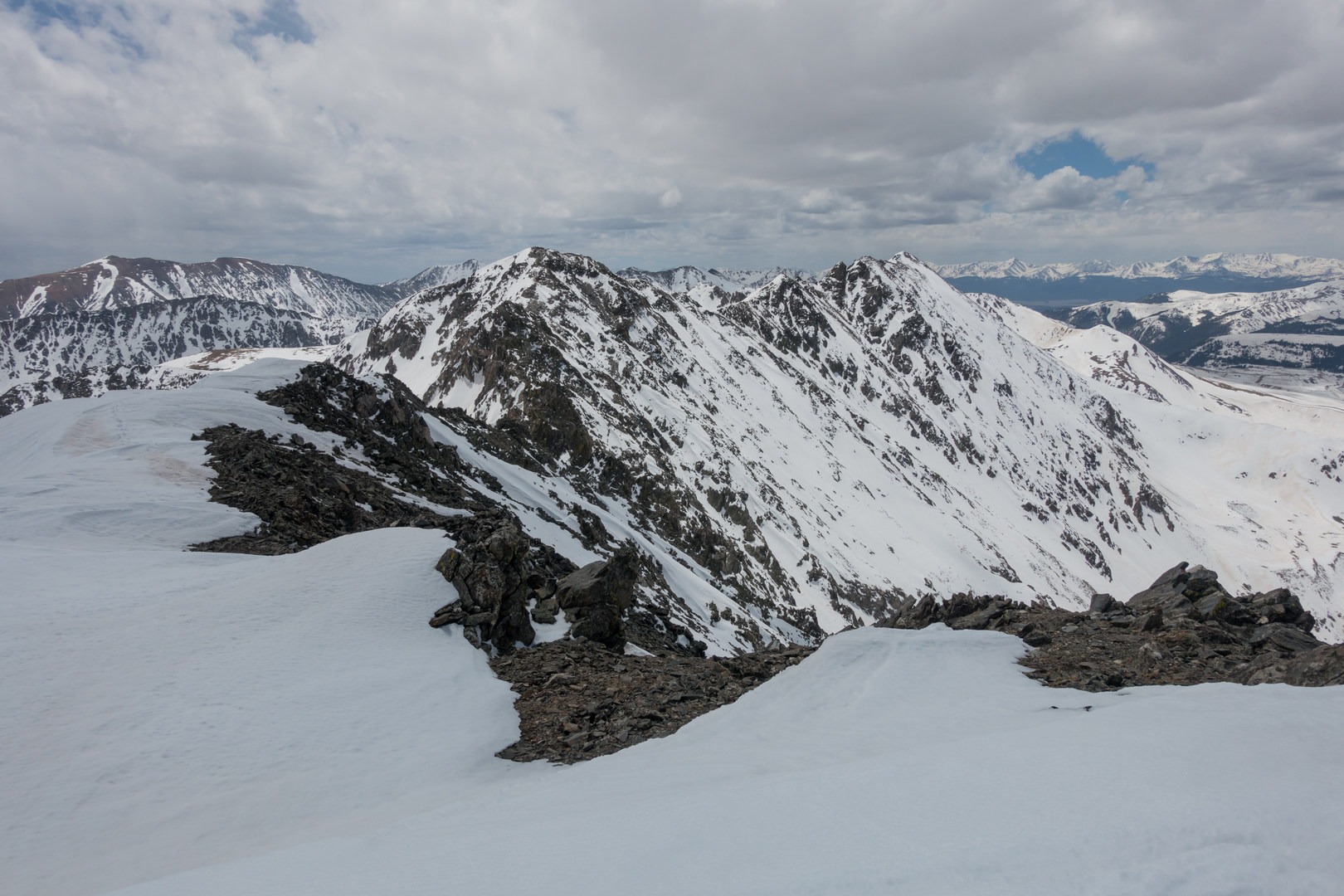Colorado is home to thousands of trails, peaks, and adventures to suit every interest. For those who want to find spectacular mountaineering opportunities, the winter and early spring narrow these thousands of options down to a much smaller number that stay relatively safe during the notoriously dangerous avalanche season. When a mountain with an exciting climb presents herself with a short approach from a trailhead off a road that stays plowed all year, it can be very difficult to pass up. Atlantic Peak is one of these mountains.
With a summit sitting high at 13,841 feet, Atlantic Peak is actually one of the Colorado's “Centennials,” the state's highest 100 summits. This makes Atlantic Peak especially interesting to climb considering that mountains under 14,000 feet get far less attention despite being equally impressive. If the prospect of a short approach to an exciting narrow snow-swept ridge is not enough to tempt you, the nearby views of Mayflower Gulch and various rugged high peaks in the area are sure to do the trick.
The climb starts from Mayflower Gulch Trailhead. Start up the road toward the old mining structures until the start of the west ridge of Atlantic Peak rises up across the meadow. Be careful crossing the meadow because it is often easy to punch through the snow into the creek if there is flow. Snowshoes are recommended along with general caution. The steep south aspect of the west ridge can pose some avalanche danger in the early season, so be careful and check the forecast before departing. Pick the line that seems safest to you based on the conditions, and get up on the gentle shoulder for a nice place to rest before the real climb begins.
Start up the ridge and you’ll notice that the ridge narrows dramatically after the first big steep section, which can present some interesting knife edges of snow given the right conditions. Take care and have your ice ax ready to self-arrest in case of a fall because the slopes on either side can be quite steep and peppered with rocks. The ridge seems to go on forever, and the route fluctuates between various sections of wide walkable paths, steep talus outcroppings, and narrow snow ridges. After some time, enjoy the incredible views from the summit of the surrounding high peaks, including Quandary on the other side of Atlantic Peak. Descend down the ridge the way you came.




























Comments
Sign In and share them.